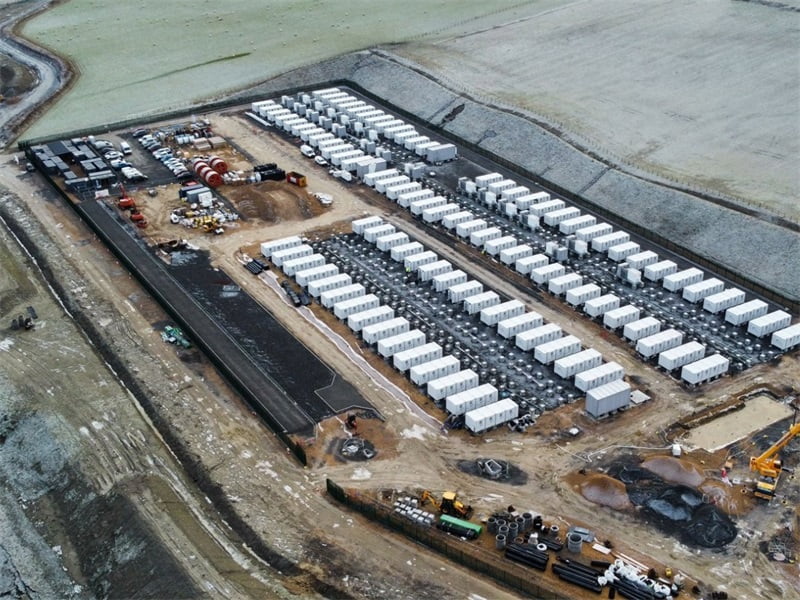
As coal and gas generation are phased out, national grids must balance the intermittency of variable renewable generation from assets such as commercial windfarms, with their country’s minute-by-minute demands for energy.
Faced with this challenge, a new report – The Energy Transition Readiness Index (ETRI) – compiled by the Renewable Energy Association (REA) and sponsored by global power management company Eaton, sheds light on the progress and challenges faced by European nations in embracing renewable energy and fostering flexibility in their energy markets.
The report ranks the progress of European countries against three core areas: socio-political support for the energy transition; ability to exploit new technologies and business models; and open market access for low carbon flexibility services, to show where the biggest “flexibility gaps” are in Europe.
The report further analysed what it means to be ‘ready’ for the energy transition – not just from the stated ambitions of the countries themselves, but through the perspective of investors and developers of renewable energy projects.
The findings
Business enthusiasm for the energy transition is growing, spurred on by concerns over carbon emissions, energy security and price volatility. Both Germany and the UK have seen vast improvements in their ‘investor attractiveness’ according to the report.
This should send clear signals to Governments across Europe of the untapped investment ready to be unlocked in the energy transition and flexibility resources if progress can be made to create the right policy environments.
Some countries are already benefitting from this relatively smaller ‘flexibility gap’ – drawing in international investment and accelerating their decarbonisation efforts as a result.
Taking into account all the criteria, the Nordic countries are leading the charge on transition readiness, with Norway scoring highest – closely followed by Denmark, Finland and Sweden. Across these countries, all were shown to have flexibility markets that better deliver fair, transparent and straightforward access for all.
In contrast, the lower ranking countries have complex and protracted flexibility markets and policies that held back investment.
Countries like Greece, Switzerland and Poland, for instance, were shown to have weaker commitments to regulatory reform. Greece and Poland also scored the lowest when considering whether the technology landscape was an enabler of, or an impediment to, investment – showing no clear route for enabling technological innovation.
Beyond this, barriers such as low levels of public support for the transition also proved to be problematic, while lower scoring countries also saw weaker Government commitments to regulatory reform.
Our recommendations
Whilst the scale of the challenge varies country by country, the steps that need to be taken remain remarkably similar across Europe:
Identify future low carbon flexibility needs: alongside renewable growth targets, countries should forecast for, and quantify, the related increase in future flexibility requirements.
Accelerate flexibility market reforms: the delivery of policies and incentives to deliver fair, transparent, and easily accessible markets for new flexibility resources must be delivered faster.
Urgently address technology and process barriers: particularly access to the grid for renewable and flexibility assets.
Set clear flexibility targets: national energy and climate plans should identify flexibility needs that show the expected proportions of flexibility likely to be available from grid-scale storage, demand-side flexibility, interconnectors, and other low carbon generation e.g., hydrogen, and residual fossil fuel generation.
Make co-ordinated plans to meet flexibility targets: the relevant national authorities, including governments, regulators, and transmission and distribution system operators (TSOs and DSOs) should jointly prioritise the development of coordinated plans to meet flexibility targets. These coordinated plans should also identify how barriers to flexibility will be addressed.
Devise policy interventions to incentivise flexibility: in countries with an urgent need for flexibility, incentives should be provided to attract investment into low carbon flexibility resources. Incentives could range from tax credits, to delivery incentives, to market prioritisation.
With Europe standing at a crossroads in its decarbonisation journey, countries that are able to minimise their flexibility gaps will soon start to pull ahead from the rest of the pack – with benefits for both the economy and their transition efforts. At Eaton, we have the technology that could enable this, but I have also seen first-hand the scale of red tape holding back investment for many European countries. By taking the steps set out above, Governments will be able to deliver the fair, transparent and easily accessible markets needed to attract private investment in demand-side flexibility.
Note/definition: Flexibility in electric market terms refers to services that help system operators to manage energy flows in order to maintain the stability of the grid, as well as those technologies that can ramp up and down production or activity in response to market signals. Example technologies include battery energy storage systems (BESS), EV charging and demand side response programmes.
About the author
Siobahn Meikle is accountable for the UK and Ireland businesses of Eaton. This involves overseeing all sales, marketing, project management and delivery teams for complex projects. A significant focus for her is spearheading transformation driven by a digital agenda and a changing energy infrastructure.
Prior to joining Eaton, Siobahn worked for Hilti Group for almost 25 years, moving from national to global positions. She is recognised for her strategy design, deployment and leadership skills.


